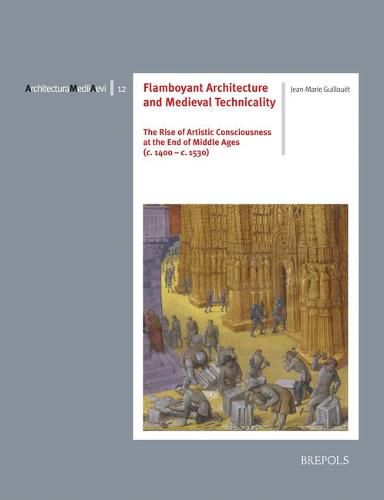Readings Newsletter
Become a Readings Member to make your shopping experience even easier.
Sign in or sign up for free!
You’re not far away from qualifying for FREE standard shipping within Australia
You’ve qualified for FREE standard shipping within Australia
The cart is loading…






This book seeks to further our understanding of the socio-genesis of artistic modernity by turning to micro-history. It explores a late-medieval decorative procedure that emerged and spread in northern and central France from the early fifteenth century to the start of the following century. Using the well-known miniature, the Building of Solomon’s temple in Jerusalem from the fifteenth-century codex of Les Antiquites judaiques as a starting point, this study deals with architecture and technical knowledge of builders. This investigation unpacks and reveals many aspects of the technical and visual culture of late medieval craftsmen and artists. The virtuosic skills these artisans displayed are worthy of inclusion in the development of technical practices of Flamboyant Gothic architecture. They also reflect broader cultural and social configurations, which go far beyond the history of building. This micro-historical perspective on what can be called hyper-technical Gothic contributes to our appreciation of the role of technical mastery in establishing social hierarchies and artistic individuation processes during the Late Middle Ages and Early Modern period.
$9.00 standard shipping within Australia
FREE standard shipping within Australia for orders over $100.00
Express & International shipping calculated at checkout
This book seeks to further our understanding of the socio-genesis of artistic modernity by turning to micro-history. It explores a late-medieval decorative procedure that emerged and spread in northern and central France from the early fifteenth century to the start of the following century. Using the well-known miniature, the Building of Solomon’s temple in Jerusalem from the fifteenth-century codex of Les Antiquites judaiques as a starting point, this study deals with architecture and technical knowledge of builders. This investigation unpacks and reveals many aspects of the technical and visual culture of late medieval craftsmen and artists. The virtuosic skills these artisans displayed are worthy of inclusion in the development of technical practices of Flamboyant Gothic architecture. They also reflect broader cultural and social configurations, which go far beyond the history of building. This micro-historical perspective on what can be called hyper-technical Gothic contributes to our appreciation of the role of technical mastery in establishing social hierarchies and artistic individuation processes during the Late Middle Ages and Early Modern period.